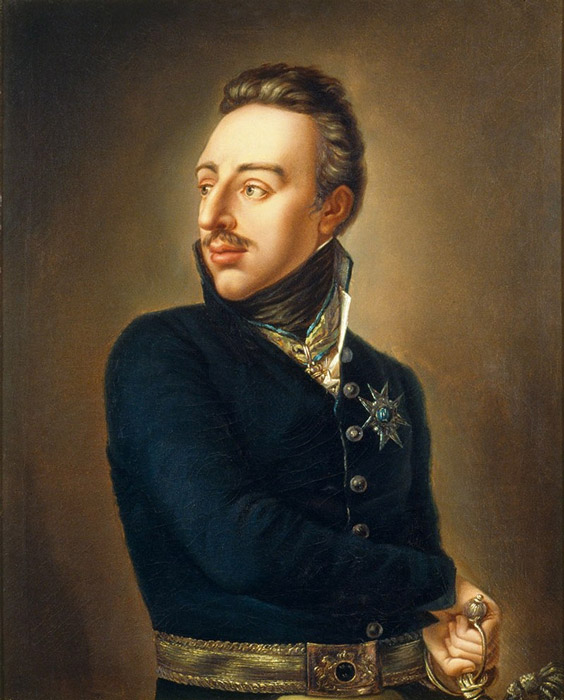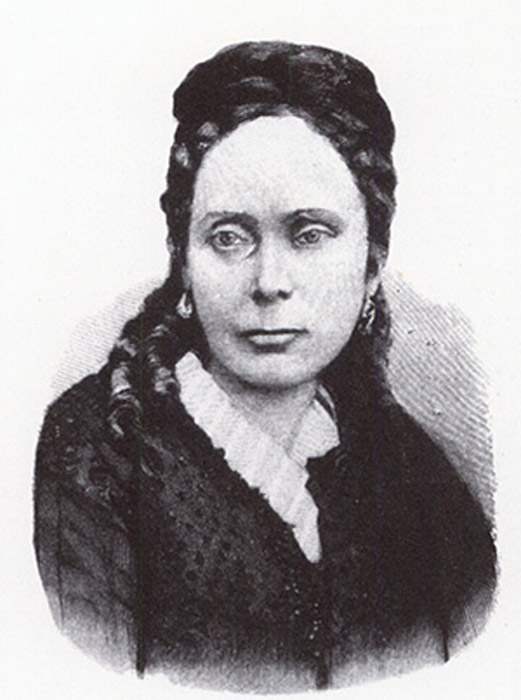The year is 1809, the last year that Gustav IV would be king of Sweden. Having ruled since 1792, the king now faced a coup and the prospect of being violently overthrown as the result of having lost Finland, which was then Swedish territory, to Russia.
With the disastrous outcome to the war, Gustav faced banishment. Although he lived on until 1837, his life after this point was less carefully chronicled and some things, apparently, only came to light much later.
Dethroned and banished from Swedish territory, Gustav also divorced his wife Frederica Baden in 1812. However he apparently remarried her in secret “in a convent in Germany” and in 1820, Frederica gave birth to a daughter. The couple hid the baby, who was called Helga, to avoid drawing attention to themselves, as they didn’t want the child to be seen as a claimant to the throne.
What would happen to this young child, nothing less than the legitimate heir to the throne of Sweden? How would she make her way in the world?
Raised in Secret
Helga de la Brache, King Gustave’s daughter, was sent in secret to be raised by Princess Sophia Albertine of Sweden, the King’s aunt. This guise was kept well-hidden until 1829, when the princess died. Fearing Helga’s secret would be discovered, she was sent to Linköping’s Vadstena asylum.
This inhumane and severe decision was allegedly made for Helga’s safety, fearing she be labeled insane if the truth was uncovered. To Helga’s relief, the influential Baden family came to her rescue and arranged her release from the asylum, only to be placed on house arrest. She was to be kept hidden from the rest of the world.
In 1837 her father King Gustav died, and de la Brache was unable to disguise her grief and was again placed in an asylum. Her behavior was deemed unacceptable by the Baden family, who had gone to extensive lengths to hide her true identity. They feared that if she spoke about her claim to the royal family, it would be considered the ramblings of a madwoman.

She managed to escape this second asylum and started to appear in society, where she gained the financial backing of several people who supported her claim. Her royal grandmother’s family eventually granted her a generous yearly pension, allowing her to enjoy a life of luxury.
- The Imposter Known as Princess Caraboo of Javasu
- Living the Lie: Who Was the Mysterious Man from Formosa?
However, her story of having been raised in secret for over 20 years raised a few eyebrows as well, and not everyone believed Helga. Her pension payments terminated in 1850, thus her life of excess and luxury was not to last forever and she found herself in debt to the people who had supported her.
Her only option was to petition the Swedish government for a royal annuity, which she received in 1861. Despite her accomplishment, members of parliament and the royal family remained divided on whether she was telling the truth.
Helga again found herself living the high life that she believed she deserved. Not only receiving a government pension of 2,400 Swedish riksdalers, but she also received donations from her charitable supporters. She appeared to be financially stable, as well as legitimate in the eyes of the royal family. Many Finns and Swedes assumed she was a royal who was subjected to an unjust punishment.
Her claims were bolstered by her female companion who regularly accompanied her. A well-educated and properly mannered woman as a friend helped to give the impression that she was of royal lineage.
Brache was portrayed as a polite and innocent woman with only good intentions. To aid her cause, communication with dethroned royalty was made illegal, making it impossible for the press to verify her story. However, this was all to change in 1870 when C. Norrby, a devoted donor, wrote an essay that prompted an investigation into Helga’s story.
It turned out that nothing Helga had told of her upbringing was true, and that she was an imposter.
Helga de la Brache’s Untold Story
In 1876-77, it was revealed that the woman known to many as Helga de la Brache was actually Aurora Florentina Magnusson. Aurora Florentina was born in 1817 in Stockholm, Sweden, to Anders Magnusson, a caretaker.

Aurora’s father died, leaving her widowed mother to raise her five children on her own. Magnusson was the polar opposite of Helga, who appeared to be of high social standing and well-educated. Her family however couldn’t afford to send her to school, so she only got a basic education.
In 1835, she was engaged as a maid and bookkeeper by the Hedman family. They thought she was striving to “raise above her station”. When hired by the Aspegren family in 1838, her luck again changed for the better. She assisted the family’s ladies in preparing for balls, giving her a glimpse into the life of opulence.
She lamented to the family her miserable existence on the eve of a ball, and one of the daughters felt sorry for her. This daughter became enamored with Magnusson and lavished her with expensive clothes. Henrika Aspegren, absolutely dedicated to Aurora, eventually left her family to join her in her fraudulent enterprises.
In 1844, the couple relocated to Finland, where Magnusson took the name Aurora Florentina de la Brache for the first time (taking the last name of the royal family). Then, in 1845, she renamed herself Anna Florentina de la Brache.
She would eventually alter her name on her passport to Helga de la Brache, the name she was most commonly known as. It’s thought that the two moved around Finland and Sweden for the following few years, with Aspegren, who worked as a teacher, providing financial assistance.
The woman established a ladies’ school in Turku, Finland, using the prestigious royal name de la Brache to give it a stately air. Helga is believed to have taught a class on how to fake fainting in order to avoid unpleasant questions. A skill that will undoubtedly come in helpful later in her life.
Following that, the couple tried and failed to create a fashion store. However, from this point Helga had discovered a far more lucrative line of business. She would henceforth look to profit from her fake name, styling herself a princess of Sweden.
Justice is Served
Between 1876 and 1877, the public trial of de la Brache drew the attention of both the royal family and the general public. Her story had divided the public’s opinion, and everyone was waiting with bated breath for the matter to be resolved.
Ultimately, the fraud was exposed. Helga was found guilty of various illegalities and sentenced to pay numerous fines.
De la Brache moved to an apartment in the Klara Norra region with her still loyal companion, Aspegren, following her trial. They lived in seclusion there, rarely speaking to others. They garnered a moment of notice in 1884 when King Oscar II spotted them roaming around Drottningholm’s gardens. Out of fear of being reprimanded they moved apartments once again.
Helga was believed to have been quiet and solemn in her senior years. On her deathbed in 1885, artist Georg von Rosen stated that she adamantly believed she was of royal birth. Was she truly convinced, or had years of deception distorted her perception of herself? Or was this a scam artist who was adamant about going to the grave with her deception?
Top Image: Was Helga de la Brache truly the heir to the Swedish throne? Source: DC Studio / Adobe Stock.
By Roisin Everard